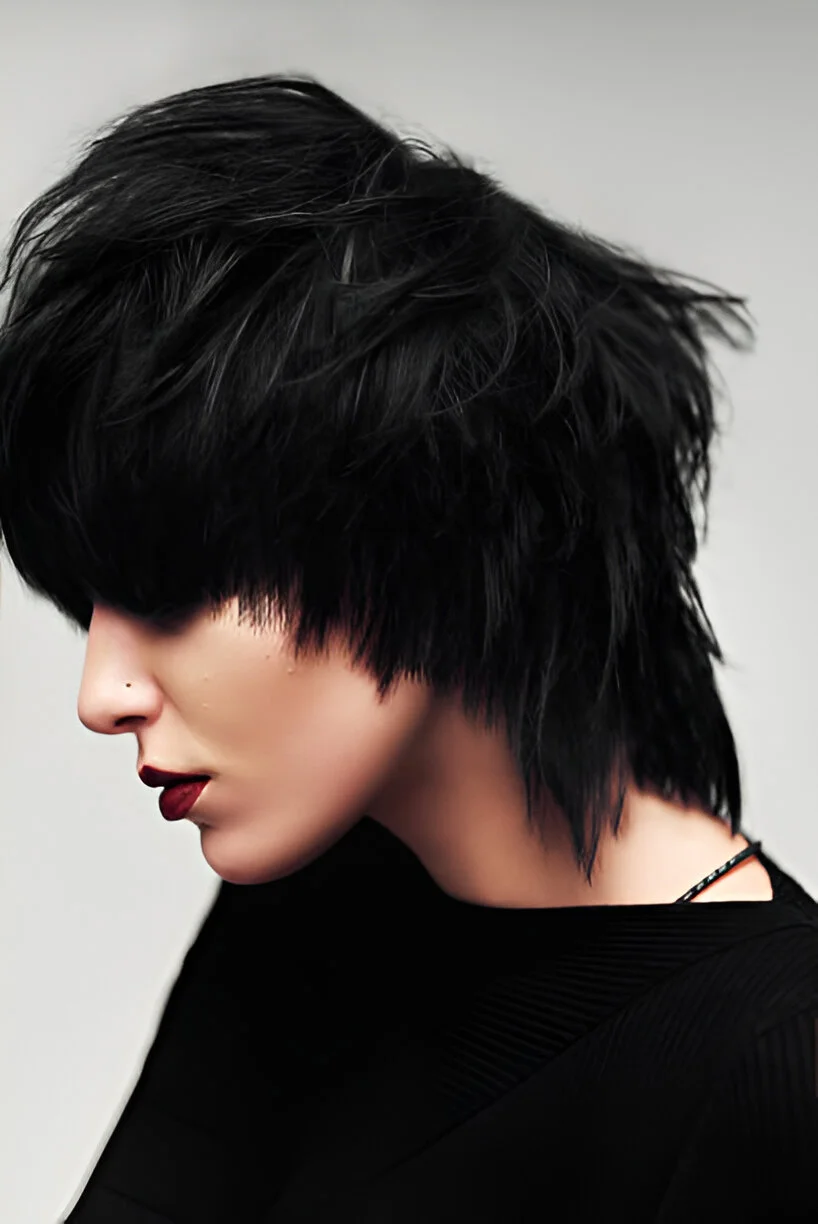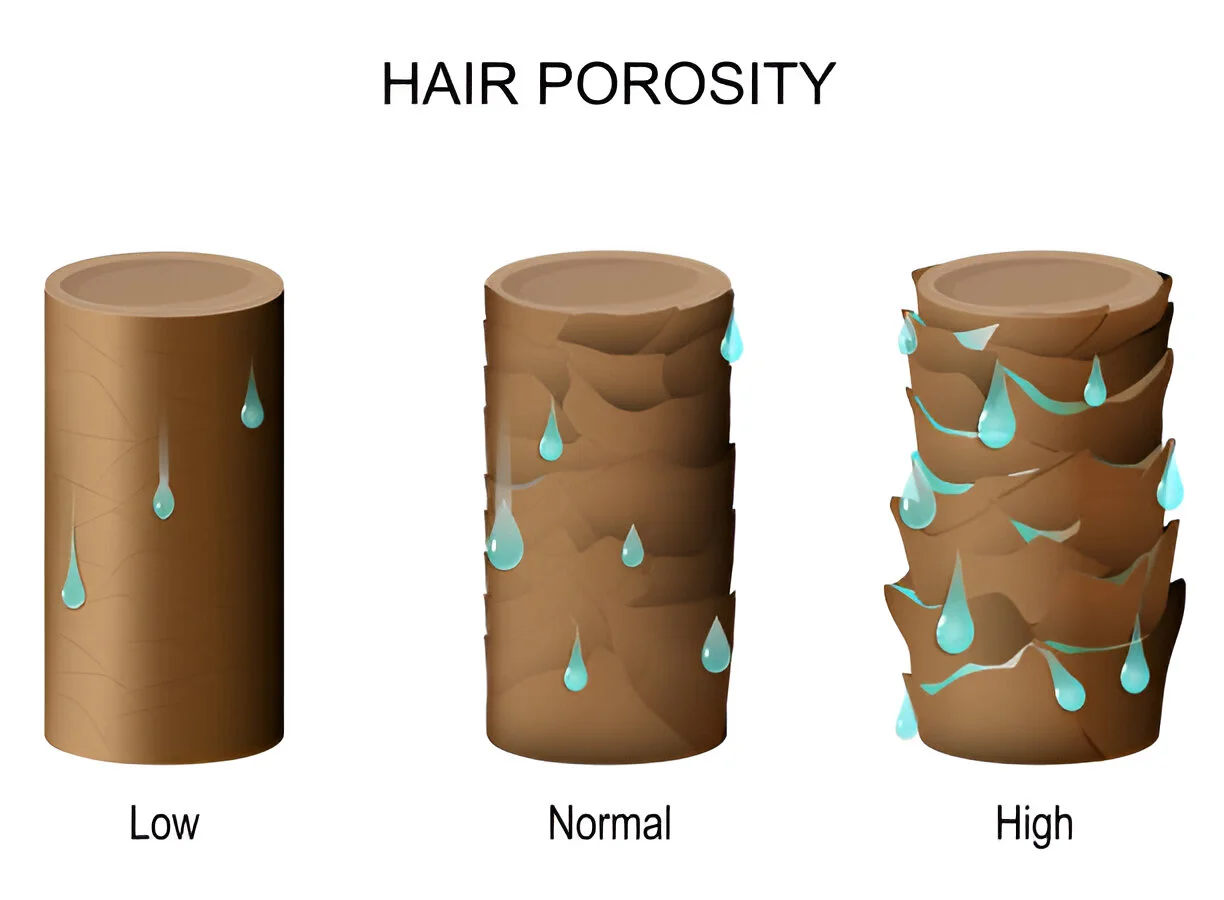Imagine you’ve just left the salon, your fresh skunk hair turning heads with its bold contrast and eye-catching dimension. There’s something uniquely empowering about sporting those striking dual tones—the dramatic interplay of light and dark strands that frame your face perfectly. But as anyone who’s taken the plunge into the world of high-contrast hair knows, maintaining that salon-fresh look can feel like battling against time itself. The vibrancy fades, the lines blur, and that perfect balance you paid good money for starts to lose its edge.
That familiar sinking feeling when you notice your once-crisp skunk stripes beginning to blur together is something many of us know all too well. I’ve watched clients leave the salon absolutely glowing with their fresh two-tone masterpiece, only to return weeks later frustrated that their statement-making style had lost its definition.
The good news? With the right maintenance approach, your skunk hair can retain its striking contrast and vibrant definition far longer than you might expect. These aren’t quick fixes or temporary solutions—these are salon-tested, colorist-approved techniques that address the unique challenges of maintaining dual-toned hair.
Understanding Skunk Hair: What Makes It Special

What Exactly Is Skunk Hair?
Before diving into maintenance techniques, let’s clarify exactly what sets skunk hair apart from other color trends. This distinctive style features dramatic contrasting sections of light and dark hair—typically black or deep brown paired with platinum, silver, or bright white sections. The name derives from the resemblance to a skunk’s iconic black and white pattern, though today’s interpretations range from subtle face-framing highlights to bold, chunky sections.
The trend first made waves in the early 2000s when celebrities embraced stark, high-contrast looks. After a period of softer, blended color techniques dominating the scene, skunk hair has roared back with renewed intensity, evolving into various iterations:
- Face-framing “money piece” contrasts
- Underneath sections (dark on top, light beneath or vice versa)
- Crown highlight patterns
- Split-dye techniques (one side dark, one side light)
What makes skunk hair particularly striking is precisely what makes it challenging to maintain—that crisp line of demarcation between light and dark sections. Unlike gradual balayage or subtle highlights that can gracefully grow out, skunk hair demands attention to preserve its intentional contrast.
Why Maintenance Matters More for Skunk Hair
Standard hair color maintenance advice falls short when applied to skunk hair. Here’s why this style demands specialized care:
- Contrasting colors fade at different rates
- The visual impact relies entirely on clear boundaries between sections
- Processing requirements differ dramatically between lightened and darkened portions
- Traditional one-formula-fits-all products often address one tone at the expense of the other
When skunk hair maintenance fails, the results are immediately noticeable: platinum sections take on brassy or yellow tones, dark sections fade to patchy browns, and most disappointingly, that sharp line of contrast—the very essence of the style—becomes muddy and undefined.
Maintenance Method #1: Color-Specific Washing Techniques
The Science Behind Color Preservation
The shower—where most color damage occurs before you even realize it. Traditional shampoos contain surfactants that, while effective at cleaning, actively strip color molecules from your hair shaft with each wash. For skunk hair, this presents a unique challenge since you’re dealing with two dramatically different color processes simultaneously.
The dark sections of your skunk hair lose depth and richness when over-washed, while light sections battle continuous brassiness and yellowing. Water temperature compounds this effect—hot water opens the hair cuticle, allowing color molecules to escape more readily from dark sections while potentially activating unwanted undertones in lightened portions.
Research published in the International Journal of Trichology confirms that color-treated hair loses approximately 80% more pigment when washed with hot water compared to cool. For skunk hair, this differential fading accelerates the breakdown of that crisp contrast you’re trying to preserve.
Product Recommendations for Dual-Toned Hair
Your washing routine needs to address both color challenges simultaneously:
For dark sections:
- Select sulfate-free shampoos with color-depositing properties
- Look for formulas containing antioxidants like vitamin E to prevent oxidation
- Consider products with UV filters to prevent sun-induced fading
For light sections:
- Incorporate purple-toned products strategically, but don’t overuse
- Choose gentle clarifying products that effectively remove buildup without altering the tone.
- Choose products with brightening ingredients like chamomile or optical brighteners
The game-changer approach that leading colorists recommend is section-specific washing—literally treating different parts of your hair with different products. While it requires slightly more shower time, the results speak for themselves.
Try this shower sequence for optimal skunk hair preservation:
- Wet hair with lukewarm (never hot) water
- Apply color-preserving shampoo primarily to the scalp and dark sections
- Use a purple or silver shampoo exclusively on platinum sections
- Rinse with progressively cooler water
- Apply section-specific conditioners in the same manner
Seasoned skunk hair enthusiasts often maintain separate wash days for different sections, focusing on dark section care one day and lightened section maintenance another. While seemingly time-consuming, this approach dramatically extends the life of your contrast.
Maintenance Method #2: Strategic Heat Protection Protocol

The Vulnerability of Contrasting Colors
Heat styling presents perhaps the greatest everyday threat to your skunk hair’s longevity. What makes this particularly tricky is that heat affects your contrasting sections differently.
Lightened hair—especially platinum or silver sections—has undergone significant structural change during the bleaching process. The cuticle layer is more porous and vulnerable, making it significantly more prone to heat damage. Meanwhile, dark sections (particularly those that have been colored darker than your natural shade) contain artificial pigment molecules that literally vaporize at high temperatures.
Research from the Journal of Cosmetic Science demonstrates that colored hair exposed to temperatures above 350°F (177°C) experiences color degradation three times faster than untreated hair. For skunk hair, this means your carefully crafted contrast quite literally goes up in smoke with each pass of a high-temperature iron.
Warning signs your heat styling is damaging your skunk hair include:
- Light sections developing a yellowish cast
- Dark sections appearing dull or ashy
- Previously sharp lines becoming increasingly blurred
- Overall increase in frizz and dryness along color boundaries
Heat Styling Without Sacrificing Color
Rather than abandoning your styling tools completely, adopt these strategic approaches:
- Temperature stratification: Use different heat settings for different sections. Light sections should never exceed 300°F (149°C), while dark sections can typically withstand up to 350°F (177°C).
- Section-specific protection: Apply heavier heat protectants containing silicones and thermal polymers to lightened sections, while using lighter-weight, color-locking protectants on dark portions.
- Heat-free alternatives: Embrace styles that work with your natural texture or utilize heat-free setting methods:
- Flexi-rods or foam rollers for bouncy curls
- Braiding damp hair for beachy waves
- Twisted buns for gentle, heat-free volume
- Plopping techniques for natural curl enhancement
- Strategic styling order: When heat is necessary, style the more resistant sections first (typically your dark sections), allowing your tools to cool slightly before addressing vulnerable lightened portions.
Many skunk hair enthusiasts find that investing in multiple styling tools with precise temperature control makes all the difference. Digital readouts remove the guesswork and allow you to customize heat exposure for each section of your dual-toned masterpiece.
Maintenance Method #3: Custom Conditioning Treatments
Targeted Deep Conditioning for Different Sections
Standard conditioning products represent a compromise that serves neither section of your skunk hair optimally. The light sections—typically stripped and porous from lightening—need intensive protein reconstruction and moisture replenishment. Meanwhile, dark sections benefit more from color-sealing treatments that lock artificial pigments into the hair shaft.
Leading colorists who specialize in high-contrast styles recommend section-specific deep conditioning treatments at least weekly. This approach recognizes that your skunk hair is essentially two different hair types existing on one head.
For lightened sections:
- Bond-rebuilding treatments containing ingredients like bis-aminopropyl diglycol dimaleate
- Protein-rich masks with hydrolyzed keratin or wheat protein
- Purple-toned deep conditioners that neutralize yellow while rebuilding structure
For darkened sections:
- Color-sealing treatments with acidic pH (4.5-5.5)
- Hydrating masks containing natural oils that enhance shine and depth
- Products with UV filters to prevent photo-oxidation of dark pigments
The application technique matters tremendously. Using small clips, section your hair according to color treatment. Apply appropriate masks to each section, ensuring complete saturation. Cover with a processing cap and apply gentle heat (a warm towel works perfectly) for 15-30 minutes before rinsing with cool water.
DIY Treatment Recipes for At-Home Care
Professional treatments deliver remarkable results, but at-home options can extend their benefits between salon visits. These kitchen-based solutions address specific skunk hair needs:
For platinum/silver sections:
- Mix 2 tablespoons plain yogurt with 1 teaspoon purple food coloring (diluted) and 1 tablespoon honey for a brightening, moisturizing treatment
- Combine 1 egg white with 1 tablespoon coconut oil and 5 drops lavender essential oil for protein reinforcement without yellowing
For dark sections:
- Blend 2 tablespoons coffee grounds (used), 1 tablespoon olive oil, and 1 teaspoon vanilla extract for color enhancement and shine
- Mix 1 ripe avocado with 1 tablespoon cocoa powder and 1 teaspoon apple cider vinegar for a color-sealing moisture treatment
The key to DIY success lies in precision application—use small brushes or applicator bottles to ensure treatments remain on their intended sections. Remember that cross-contamination between light and dark treatments can undermine your careful maintenance work.
Maintenance Method #4: Strategic Touch-Up Timeline
The Art of Perfect Timing
Unlike uniform hair color that shows regrowth primarily at the roots, skunk hair presents a multidimensional maintenance challenge. Root growth affects different sections differently, and the contrast boundary itself requires periodic refinement to maintain that sharp edge that defines the style.
Establishing a personalized touch-up timeline requires understanding your specific growth patterns and color choices:
- Fast-growing hair (more than ½ inch monthly) typically needs boundary refinement every 4-5 weeks
- Average growth (about ⅓ inch monthly) can often stretch to 6-7 weeks between touch-ups
- Slow-growing hair may extend to 8 weeks while maintaining acceptable definition
The composition of your skunk pattern also affects your timeline. Face-framing pieces demand more frequent attention since they’re most visible, while underneath sections or back-of-head patterns can often go longer between refinements.
Many experienced colorists recommend staggering your maintenance schedule rather than addressing everything at once:
- Week 1: Full color service establishing fresh contrast boundaries
- Week 3-4: Quick touch-up of most visible sections only
- Week 6-7: Return to full service
This approach minimizes overall chemical exposure while maintaining the visual impact of your style.
Touch-Up Techniques Between Salon Visits
Between professional services, these targeted approaches can extend your skunk hair’s pristine appearance:
- Temporary concealers: Root shadow powders, sprays, or markers in matching shades can disguise growth at the most visible boundaries. Select products specifically formulated for colored hair to avoid unexpected interactions.
- Strategic styling: Changing your part location or adopting styles that showcase your most freshly-touched sections can visually extend your maintenance window.
- Toning options: For lightened sections showing unwanted warmth, color-depositing conditioners used exclusively on those areas can refresh tone without affecting dark sections.
When considering at-home touch-ups, proceed with extreme caution. The clean lines defining skunk hair require precision that’s difficult to achieve outside a professional setting. Generally, experts recommend:
- Acceptable DIY: Toning treatments for lightened sections
- Professional only: Boundary retouching or root blending
- Absolutely never DIY: Initial placement of contrast sections or significant regrowth correction
The risks of DIY boundary touch-ups include color bleed between sections, over-processing already-treated hair, and permanently compromising the crispness of your contrast—the very feature that defines skunk hair.
Maintenance Method #5: Environmental Protection Strategies
Invisible Threats to Your Skunk Hair
Environmental factors silently sabotage your skunk hair’s longevity, often before visible damage appears. Understanding these threats allows for proactive protection:
UV Exposure: Sunlight doesn’t just fade your car’s upholstery—it actively breaks down hair color molecules through photo-oxidation. Research in the Journal of Photochemistry and Photobiology demonstrates that UV exposure affects different hair colors at different rates, with lightened sections showing yellowing and dark sections fading to brassy or reddish tones.
Chlorine and Minerals: Swimming pools present a double threat—chlorine strips color while copper compounds in the water can deposit a greenish tint on lightened sections. Similarly, hard water minerals accumulate differently on various sections, intensifying brassiness in lighter areas while dulling darker ones.
Pollution Particles: Urban environments contain microscopic pollutants that adhere differently to various hair textures. Since the lightening process typically leaves hair more porous, these particles disproportionately affect your platinum or silver sections, creating dullness and color contamination.
Daily Protection Routine
Integrating these protective measures into your daily routine significantly extends your skunk hair’s vibrancy:
- Physical barriers: When outdoors for extended periods, consider:
- Wide-brimmed hats that shield hair from direct sunlight
- Scarves or bandanas covering particularly vulnerable sections
- Protective styles that tuck lightened sections away from environmental exposure
- Preventative products: Apply targeted protection:
- UV-filtering sprays formulated specifically for colored hair
- Leave-in conditioners containing antioxidants like vitamin E or green tea extract
- Barrier creams applied to light sections before swimming or snow exposure
- Evening detox routine: Before bed, implement a gentle cleansing ritual to remove accumulated environmental contaminants:
- Diluted apple cider vinegar rinse (1 tablespoon per cup of water) to remove mineral buildup
- Gentle clarifying spray applied section-specifically
- Overnight protective covering (silk bonnet or pillowcase) to minimize friction damage
- Seasonal adjustments: Recognize that different seasons present different threats:
- Summer: Emphasize UV protection and swimming defenses
- Winter: Focus on static control and moisture retention
- Spring/Fall: Address rain exposure and humidity fluctuations
Professional colorists note that clients who implement comprehensive environmental protection extend their skunk hair’s pristine appearance by an average of 2-3 weeks compared to those who neglect these measures.
Common Mistakes to Avoid
Color-Compromising Errors
Even with the best intentions, these common missteps can undermine your maintenance efforts:
Product overload: Applying too many products creates buildup that dulls both sections and blurs contrast lines. Light sections particularly suffer from heavy product use, developing a coated appearance that masks their brightness.
Heat styling without section awareness: Using the same heat level across all sections accelerates color degradation in your more vulnerable portions.
Incorrect purple shampoo use: While purple formulas combat yellowing in light sections, overuse causes a lavender cast and can stain darker sections if misapplied.
Over-washing: Daily shampooing dramatically accelerates color fade in both sections. Most skunk hair can be maintained with 2-3 washes weekly, supplemented with section-specific dry shampoo between washes.
Brush contamination: Using the same brush across different color sections can transfer pigments, particularly when hair is wet. Maintain separate tools for light and dark portions.
Professional Insights on Damage Prevention
Leading colorists specializing in high-contrast looks share these critical observations:
“The biggest mistake I see with skunk hair maintenance is treating it like regular color. These clients essentially have two completely different hair types on one head, and each deserves its own care routine.” — Alexis Barrett, Celebrity Colorist
“The consultation process for skunk hair should always include a realistic maintenance discussion. I always tell clients that dramatic contrast requires commensurately dramatic care commitment.” — Jamie Chen, Editorial Color Specialist
Warning signs your maintenance routine needs adjustment include:
- Increasing dryness specifically along color boundaries
- One section fading dramatically faster than the other
- The development of an unspecified “third color” that emerges where different sections intersect.
- Unexplained brassiness or dullness despite regular care
When emergencies strike—chlorine exposure, unexpected color fade, or product disasters—seek professional help immediately. Most colorists offer quick correction appointments specifically for high-maintenance styles like skunk hair. The sooner you tackle problems, the easier it becomes to find a solution.
Conclusion: Embracing the Maintenance Journey
Maintaining your statement-making skunk hair doesn’t have to feel like a part-time job. By incorporating these five proven techniques into your hair care routine, you’ll not only extend the life of your striking color contrast but also keep your hair healthy and vibrant between salon visits.
Remember that your unique skunk pattern deserves customized care—what works for one variation might not work for another. Listen to your hair, adapt these methods to your specific needs, and don’t be afraid to consult with your stylist for personalized advice.
The confidence that comes with well-maintained, boldly contrasting strands is well worth the effort—and now you have the expert blueprint to make it happen. Your skunk hair isn’t just a style statement; it’s a commitment to self-expression that deserves proper care.
With these techniques in your maintenance arsenal, you’re equipped to keep those head-turning contrasts crisp and your self-confidence soaring. After all, the most powerful aspect of any bold hair choice is how it makes you feel—and nothing feels better than skunk hair that looks just as amazing on day 30 as it did leaving the salon chair.

Frequently Asked Questions About Skunk Hair Maintenance
How often should I wash my skunk hair to maintain the contrast?
Ideally, limit washing to 2-3 times weekly. Use section-specific dry shampoo between washes to extend freshness without compromising color integrity.
Can I swim in chlorinated pools if I have skunk hair?
Yes, but with precautions. Before entering the pool, make sure to thoroughly wet your hair with clean water, as dry hair absorbs more chlorine. Apply a leave-in conditioner as a barrier, and rinse immediately after swimming with a chelating shampoo.
What’s the average lifespan of skunk hair before needing a full recolor?
With proper maintenance, most skunk hair styles can maintain acceptable definition for 6-8 weeks. Face-framing pieces typically need touch-ups around week 4.
Are there any natural ingredients I should avoid with two-toned hair?
Lemon juice, vinegar (in high concentrations), and chamomile tea can lighten dark sections when exposed to heat or sunlight. Conversely, coffee rinses may deposit unwanted color on platinum sections.
How can I prevent my light sections from developing a brassy tone?
Beyond purple shampoo, use filtered shower water (mineral buildup contributes to brassiness), avoid heat styling above 300°F, and use UV protection products daily.
Is it possible to maintain skunk hair if I work out daily?
Absolutely! Wear protective styles during workouts, use sweatbands to prevent sweat from lingering on color boundaries, and refresh with dry shampoo rather than full washes after every session.
What’s the biggest difference between maintaining skunk hair and regular highlights?
The stark contrast in skunk hair means any maintenance failures are immediately visible, unlike subtle highlights that can gracefully grow out. Skunk hair also requires section-specific care rather than uniform treatment.







